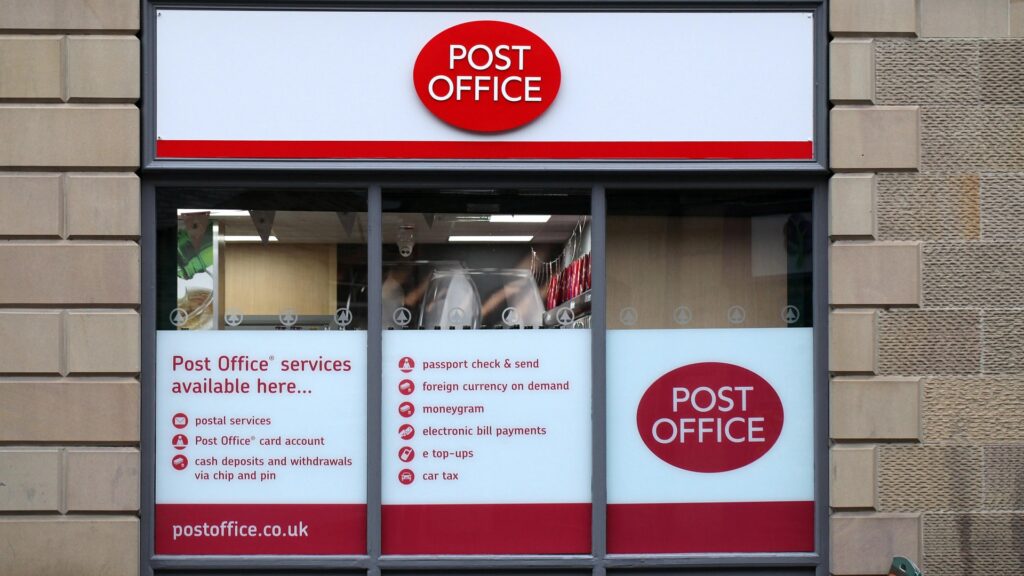THE Post Office is bringing back a key banking service, two years after it was discontinued, The Sun can reveal.
Customers will soon be able to apply for a Post Office personal loan once again.
It has teamed up with Lendable, a UK fintech company, to offer loans that promise quick approvals and competitive rates.
The postal service stopped offering personal loans through its partnership with the Bank of Ireland in 2023 but continues to provide savings accounts.
Now, new loans will be available online only, allowing people to borrow between £1,000 and £25,000, with interest rates starting at 8.1% APR.
Borrowers will be able to choose repayment terms of one to five years.
As an example, borrowing £5,000 over two years would mean paying £226.38 per month, with £433.12 worth of added interest.
Personal loans are unsecured, meaning you don’t need to offer up assets like your home or car as collateral.
They’re often a safer and cheaper way to borrow compared to using a credit card, an overdraft, or payday loans, which can charge interest rates of up 1,250%.
Many people use personal loans for things like home improvements, buying a car, or consolidating debts.
A good credit score helps you get the best interest rates, but the Post Office’s partnership with Lendable will use AI to look beyond this metric, making it easier for more people to qualify for better rates.
If approved for a new Post Office loan, most borrowers will get their money in under a minute.
Ross Borkett, Post Office banking director, said: “We are delighted to launch our online personal loans offering with Lendable and give our customers the ability to take out a loan that covers their needs in minutes.
“By developing our commercial offering, we will generate income to be shared with postmasters and help sustain their presence in communities nationwide.”
The loans will be available directly through the Post Office website and on comparison websites.
What is a personal loan?
A PERSONAL unsecured loan is a type of borrowing where you receive a lump sum from a lender and agree to repay it in instalments, along with interest.
Unlike secured loans, it doesn’t require any collateral, such as a house or car.
Approval is based on your creditworthiness, income, and existing debts, making it a riskier option for lenders and potentially more expensive for borrowers.
Despite this, personal loans can be cheaper than credit cards and overdrafts, but it’s not always guaranteed.
While personal loans often have lower interest rates, especially if you have a good credit score, the overall cost depends on several factors like the loan term, fees, and your individual circumstances.
Credit cards and overdrafts can be more expensive due to high interest rates and fees, especially if you only make minimum payments or exceed your overdraft limit.
It’s essential to compare the total cost of borrowing, including all fees and interest, before making a decision.
How does it compare?
Rachel Springall, Finance Expert at Moneyfactscompare.co.uk, said: “Borrowers might like to choose the Post Office for ease and due to trust, but it is always essential to shop around for a low-rate loan and not just take the first quote they get, even if it feels like a hassle to look elsewhere.
One of the lowest advertised loan rates on the market is 5.9% APR, such as with M&S Bank, Santander and TSB.
However, Rachel said: “Borrowers do need to keep in mind that these are advertised rates and, out of all successful applicants, a minimum of 51% are offered this rate.”
Sarah Coles, Head of Personal Finance at Hargreaves Lansdown, suggests considering credit unions when comparing options.
Their interest rates are capped, making them a cost-effective alternative to payday loans, credit cards, or overdrafts.
Rates range from 12.7% APR (1% monthly) to a maximum of 42.6% APR (3.5% monthly), and some even offer same-day funding.
If you’re thinking about using a personal loan to consolidate debts, it’s important to address overspending habits first – otherwise, you could end up in a worse financial situation later.
Sarah said: “This type of loan can be great for those who need money urgently, but borrowers must think carefully before taking on debt.
“Consider whether you need to borrow, whether you can afford repayments, and whether it’s the best option for your circumstances.”
To find the best rates visit price comparison websites including moneyfactcompare.co.uk and moneysupermarket.com.
How to get free debt help

There are several groups which can help you with your problem debts for free.
- Citizens Advice – 0800 144 8848 (England) / 0800 702 2020 (Wales)
- StepChange – 0800138 1111
- National Debtline – 0808 808 4000
- Debt Advice Foundation – 0800 043 4050
You can also find information about Debt Management Plans (DMP) and Individual Voluntary Agreements (IVA) by visiting MoneyHelper.org.uk or Gov.UK.
Speak to one of these organisations – don’t be tempted to use a claims management firm.
They say they can write off lots of your debt in return for a large upfront fee.
But there are other options where you don’t need to pay.

